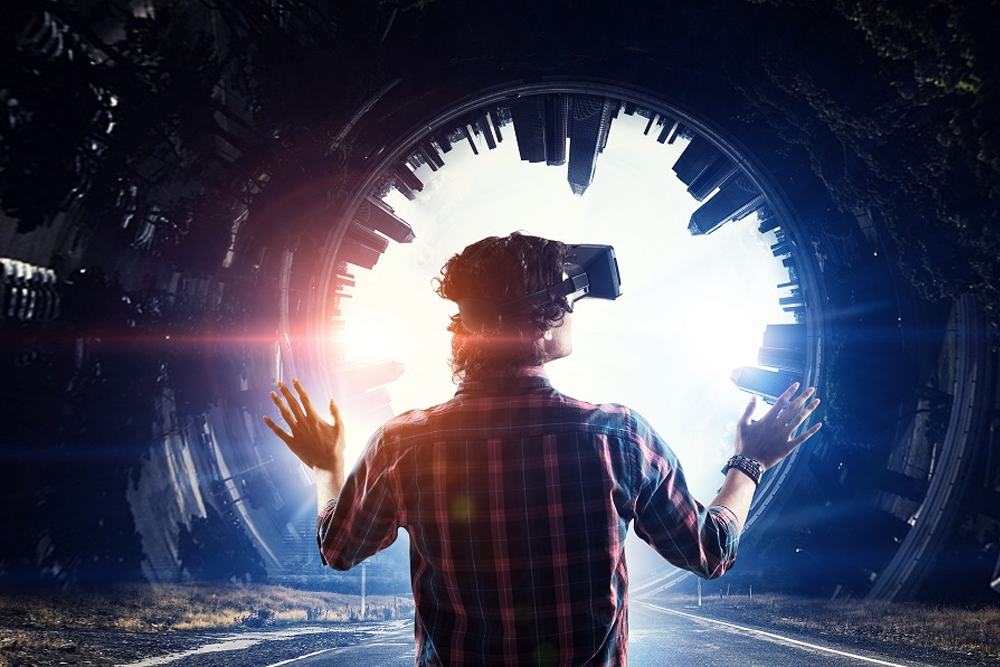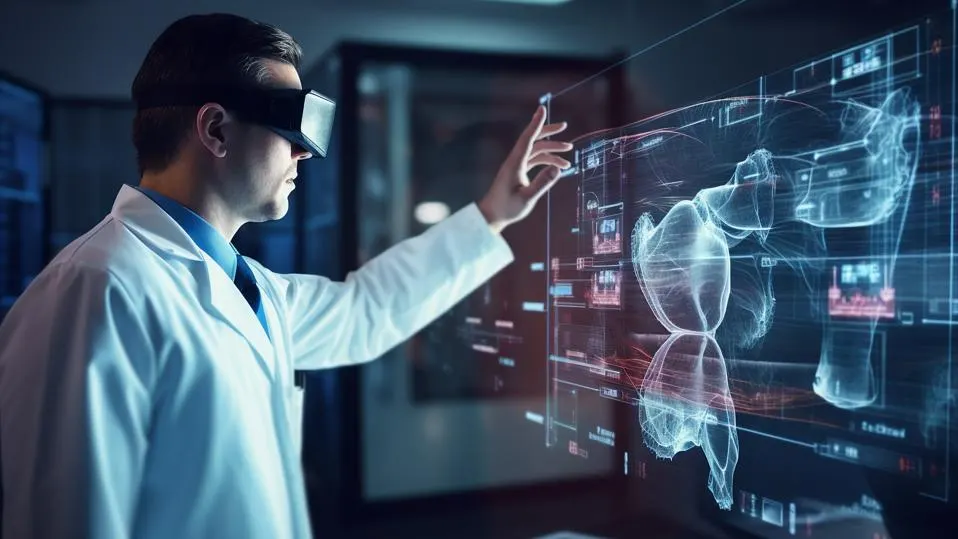How VR And AR Will Change How We Visualise Data
2 July 2021
The way we present data to others has evolved from simple pie charts and bar graphs to sophisticated interactive visual isation s drawing on real-time data sets. This helps us to communicate insights faster and more effectively.
It’s only the start though, and as the data available to us grows increasingly complex and fast-moving, techniques for presenting it are continuing to evolve. Today’s Big Data projects often involve amalgamating hundreds of data sources, structured and unstructured, and it’s likely that 2D images, or even 3D ones presented on a flat screen, will no longer cut the mustard.

Virtual reality and augmented reality – at the moment primarily considered a medium for delivering entertainment – offer the intriguing possibility of letting us “step inside” the data. 360-degree vision instantly broadens the available canvas, and interactions become more intuitive as we can reach out to touch and manipulate what is shown to us.
One provider of such a solution is Virtualitics, whose technology is currently being tested by clients in the finance, pharmaceuticals and energy industries. Their CEO and founder Michael Amori talked to me about how fusing machine learning with VR and AR-driven reporting will help unlock the potential of Big Data for an ever-growing range of organisation s and enterprises.
“The motivation is simple,” Amori tells me, “the amount of data in the world doubles every year according to some sources and the amount of that data which gets analysed is less than one percent. Having been in charge of a trading desk on Wall Street for seven years, I know that, of that data which does get analysed, a lot of the time, that analysis isn’t very useful.
“Enterprises are leaving a lot of potentially really useful information on the table, which means they are wasting money.”
This is largely due to the limitations of visualisation and reporting tools which aren’t up to the job of presenting complex information in a clear and concise way.
“So, you hire a data science team and they find out that, of 100 metrics you analyse, there are five which produce the outcome you’re interested in. There’s currently no way to visualise all of those metrics at the same time – to see how they all interact – because we’re stuck looking at two or three things in a 2D scatter graph. If what you’re interested in is a function of five things, or eight or ten – you can’t visu alis e them all at the same time with traditional tools.”
By presenting data inside a 3D canvas which wraps around the user, far more than the traditional three dimensions become available. As well as placement on X, Y or Z co-ordinates, data points can be distinguished by size, colour, transparency, as well as direction and velocity of movement.
And while this all may seem fairly abstract it’s important to remember that it’s being presented via a medium which we have evolved over thousands of years to navigate intuitively – 3D space (or the illusion of it, at least). Bar charts, by comparison, have only been a part of our toolset for a couple of hundred years.
This means we can interact with the data in a way that is far more natural – reaching out to manipulate objects with our hands, moving around them to view them from a clearer perspective and highlighting objects of interest with a point of the finger.
Another crucial advantage of a VR or AR environment is that the “canvas” can be inhabited and interrogated by more than one person at the same time – limited only by how many headsets are available.
“We can meet inside a shared virtual office – where we’re both able to touch the data, interact with it – you can ask me ‘hey, what are those red dots over there in the corner?’ and I can tell you, those are the bad bonds – the ones we want to sell.”
VR can also help to eliminate distractions. With the user’s visual – and sometimes aural – senses – entirely dictated by the output of the VR environment, attention can stay fixed on what matters, until the headset is removed.
There are already some great examples of VR-enabled data visualisation which anyone can experience with a cheap cardboard headset, for example, Google’s exploration of data around the UK Brexit issue. At the moment, these are mostly journalistic or consumer-oriented, but as businesses increasingly struggle to communicate meaning from the ocean of information they are generating, it’s likely that they will increasingly look towards these technologies for enterprise use.
One pioneer in the use of VR in visualisation was tyre manufacturer Goodyear, which created a simulation allowing every aspect of the performance of their racing tyres to be examined, and the effects of changes such as road surface and weather to be calculated in real-time.
Amori tells me confidently that “VR and AR will become a huge game-changer for enterprises. Everyone right now things of them as toys – for video games and entertainment – but they have a very serious use and can bring two things to the table – the ability to see many dimensions in data at the same time, and it also provides a collaborative environment which is missing in current analytics tools. With that in place I can help you understand and buy into my conclusions much more effectively.”
Related Articles
2025’s Tech Forecast: The Consumer Innovations That Will Matter Most
Consumer technology covers all of the tech we buy to make our lives more convenient, productive or fun.[...]
7 Healthcare Trends That Will Transform Medicine In 2025
Healthcare has evolved dramatically in recent years, with technology driving countless new opportunities, just as demographic and societal factors have created new challenges.[...]
The Simple ChatGPT Trick That Will Transform Your Business AI Interactions
I believe ChatGPT and other generative AI tools can help pretty much any business.[...]
The Third Wave Of AI Is Here: Why Agentic AI Will Transform The Way We Work
The chess pieces of artificial intelligence are being dramatically rearranged. While previous iterations of AI focused on making predictions or generating content, we're now witnessing the emergence of something far more sophisticated: AI agents that can independently perform complex tasks and make decisions.[...]
How Generative AI Will Change Jobs In Cybersecurity
Ensuring robust cybersecurity measures are in place is more important than ever when it comes to protecting organizations and even governments and nations from digital threats.[...]
The 10 Most Important Banking And Financial Technology Trends That Will Shape 2025
As technological disruption and economic uncertainty continue to reshape the financial landscape, alongside dramatic shifts in consumer behavior and regulatory requirements, 2025 promises to be both challenging and opportunistic for banking and financial services.[...]
Sign up to Stay in Touch!
Bernard Marr is a world-renowned futurist, influencer and thought leader in the fields of business and technology, with a passion for using technology for the good of humanity.
He is a best-selling author of over 20 books, writes a regular column for Forbes and advises and coaches many of the world’s best-known organisations.
He has a combined following of 4 million people across his social media channels and newsletters and was ranked by LinkedIn as one of the top 5 business influencers in the world.
Bernard’s latest book is ‘Generative AI in Practice’.










Social Media